When it comes to getting the most out of your garden space and allowing crops to work naturally together, it doesn’t get any better than using the 3 sisters companion planting method to grow sweet corn, beans and squash/zucchini!
This growing method was mastered hundreds of years back by Native American tribes, and it allowed them to grow three of their most beloved crops (corn, beans and squash) better than ever.
The method is actually the perfect example of companion planting. So much so, that more and more backyard gardeners are using it in their own gardens. Not only do the three plants grow in harmony together, they also help to support each other – both figuratively and literally.
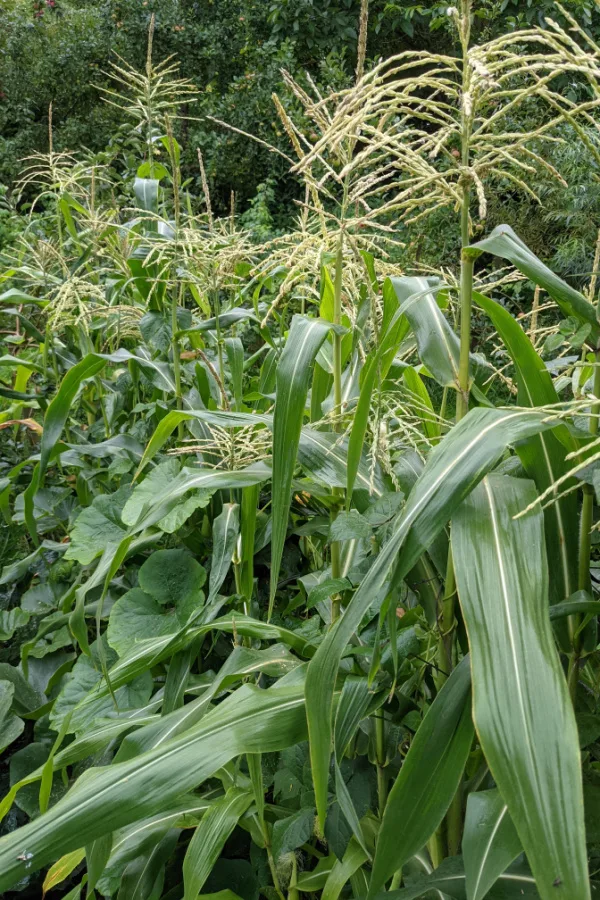
One of the best advantages of the three sisters companion crops method is that they are pretty much hands-off after planting. And because they are all seed crops – planting couldn’t be easier either! Not only that, but it’s also a great way to grow three nutritious and heavy-producing crops close together.
These three crops normally take up a lot of garden real estate if they were planted using today’s “normal” suggested distances apart. But by planting them together, you can harvest all of their goodness in just 1/3rd of the space.
Benefits Of Using The 3 Sisters Companion Planting Method
So just what are all of the benefits of growing these 3 garden crops together? Well, the list is lengthy!
Sweet corn is known as a heavy feeder crop from the soil. One of the biggest components it needs to grow and produce corn happens to be nitrogen. Unfortunately, if the soil is depleted of nitrogen, the corn crop will suffer.
As it turns out, pole beans help to absorb nitrogen from the air and direct it toward the soil. When planted near sweet corn and squash, both crops are able to use that nitrogen as they grow. In return, the sweet corn gives the pole beans a great place to climb up as it grows.
The squash acts as a ground cover to provide shade to the soil. This helps to regulate the soil temperatures as well as help maintain moisture levels. The shade also helps to keep weeds at bay, and less weeds means less nutrients stolen from the soil and the three crops.
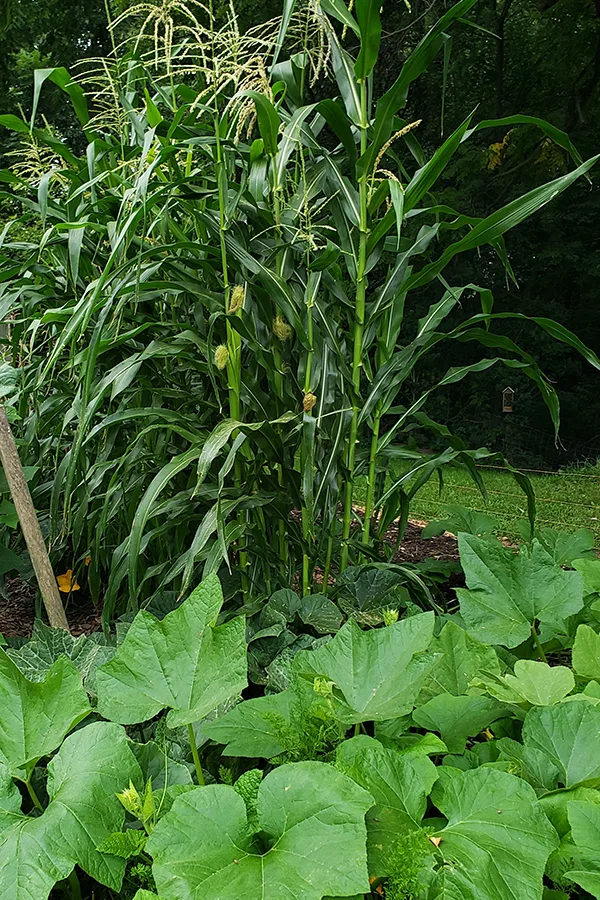
Squash is also known for having very prickly leaves. Besides being just an excellent ground cover and holding in moisture to the soil, those prickly leaves help to deter deer, raccoons, and other pests from getting to the beans and sweet corn. It truly is a match made in heaven between the three plants!
How To Grow Using The 3 Sister Companion Planting Method
For simplicity reasons, think of your planting area as a circle. At the very center of the circle will be your sweet corn. Next will be your pole beans – and around everything else will be the squash.
You can also think of the 3 sisters crops as a ladder. At the very top of the ladder is the tall sweet corn. In the middle of the ladder is the pole beans. Lastly, the squash plants take up the very bottom and act as a ground cover.
You should plant all three of the crop seeds directly into the soil as opposed to starting seeds indoors. Their seeds germinate easily and often work much better than using transplants for growing.
Native American tribes would often plant all three seed crops at the same time, even using the same mounds. However, in order to get the most from the 3 sister companion plants, it is best to stagger your planting times slightly.
Sweet Corn – 3 Sisters Companion Crops
In order to get sweet corn to be able to support the pole beans, you need to get the sweet corn seeds in the ground a few weeks before your other two crops.
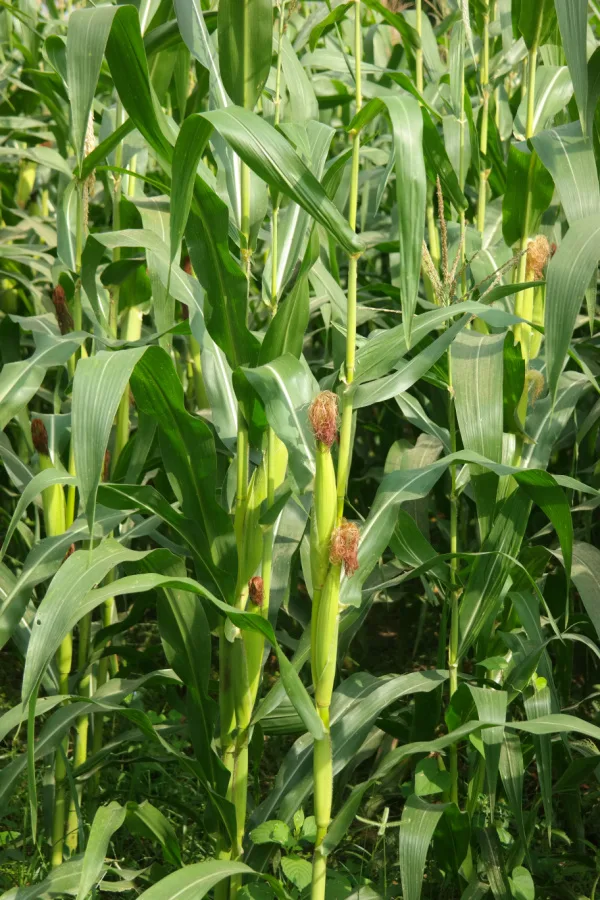
Your location and the length of the growing season will dictate the sweet corn variety you choose. Pick one that has a “days to harvest” length that will allow you enough time to plant when the soil temperature is warm enough and harvest before the first frost in the fall.
The days to maturity are usually around 60 to 100 days. For example, in Midwest USA locations, you will want more of an early to mid-season sweet corn variety that will be ready in around 65-85 days.
Heirloom varieties are always great choices, but there are wonderful hybrid varieties now available that are a bit more disease resistant. To learn how to specifically grow sweet corn as well as four great heirloom varieties, check out our article “Growing Heirloom Sweet Corn.”
One final note on planting your corn – sweet corn is pollinates via the wind. For best results, try to grow at least 15 to 20 plants together in order to have better success with pollination. This allows for the wind to blow the pollen among the plants for better production.
Pole Beans – 3 Sisters Companion Planting
A few weeks after planting the corn, it is now time to plant the pole bean seeds. The corn should be around four to six inches at this stage but not tall enough to shade out the bean seeds. This time frame also allows the corn stalks to be sturdy enough to support the pole beans as they start to put out tendrils for climbing and attaching to the corn.
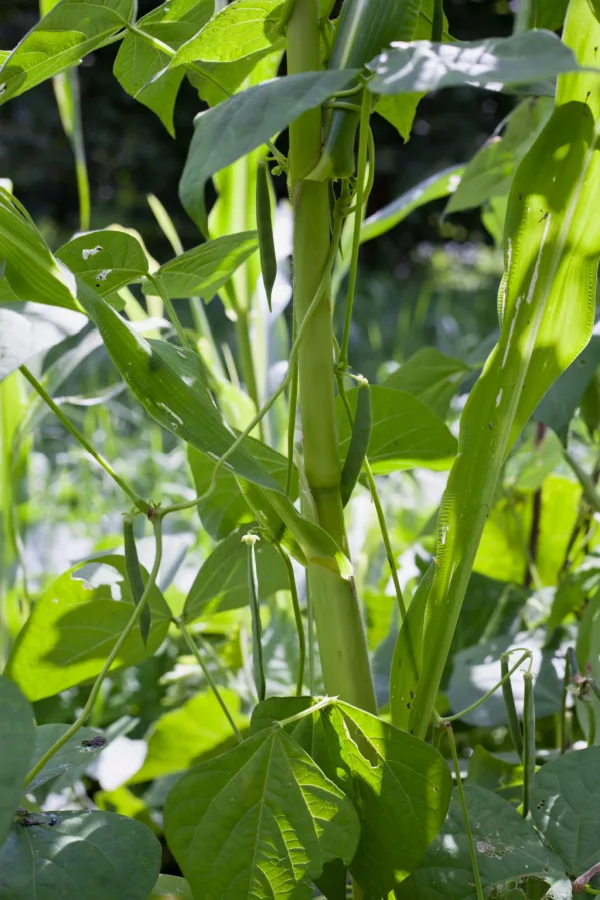
Beans are self-pollinating, so you only need to have one plant one in order to have success. With a maximum harvest in mind, space the pole bean seeds about 2 to 4 inches apart around the stalks. There is no need for mulching since you are going to be planting squash seeds soon after the pole beans.
Squash – 3 Sisters Companion Crops
Lastly, it’s time to plant your squash. About one week after the pole beans have germinated, you can get the squash seeds in the ground. This timing will prevent the quick-growing squash plants from shading out the pole bean seedlings to early.
Plant squash on the outskirts of the other two sister crops, facing the sunny side of your garden space. This will allow the squash plants to get plenty of sunlight while growing and taking hold. As the squash plants grow, they will fill in and create an amazing ground cover for the pole beans and sweet corn.
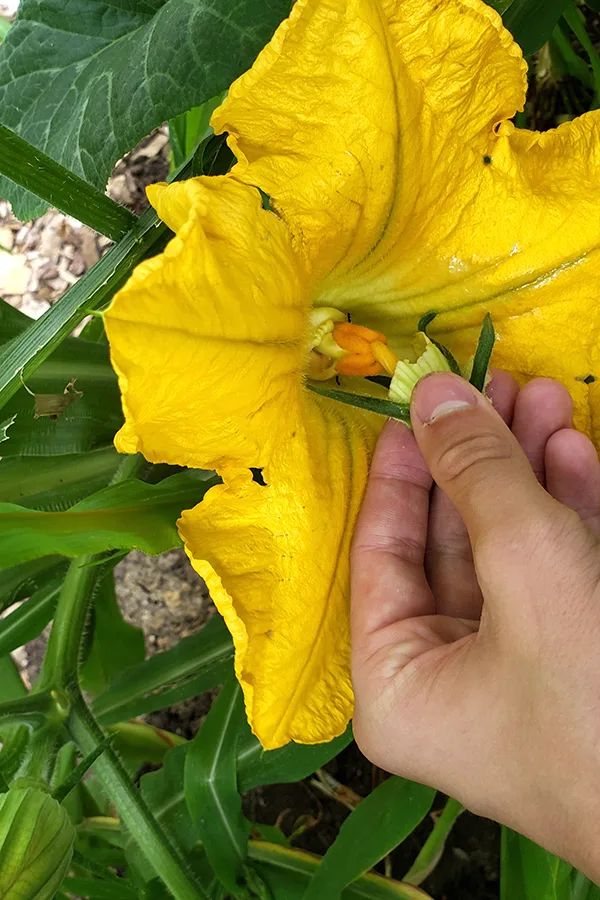
Squash plants rely on pollinators such as bees, butterflies, and hummingbirds in order to produce fruit. Planting flowers and other pollinator-friendly plants nearby will help to attract these helpful insects to your garden space.
If you lack pollinators, however, you can also hand pollinate squash blossoms like you would cucumber or zucchini plants. By growing sweet corn, pole beans, and squash as companion plants using the 3 sisters method, you are able to take full advantage of the way nature intended these crops to work together – all while having to not work as hard in your garden! For more easy tips on the power of companion planting, be sure to check out 3 Great Reasons To Plant Zinnias In Your Garden – The Perfect Companion Plant!
Follow Our Facebook Page For Even More Great Tips! Simple Garden Life Facebook Page
Simple Garden Life is a website dedicated to keeping gardening fun, simple and enjoyable! We publish two new articles each week along with a new garden podcast episode every two weeks. This article may contain affiliate links.
